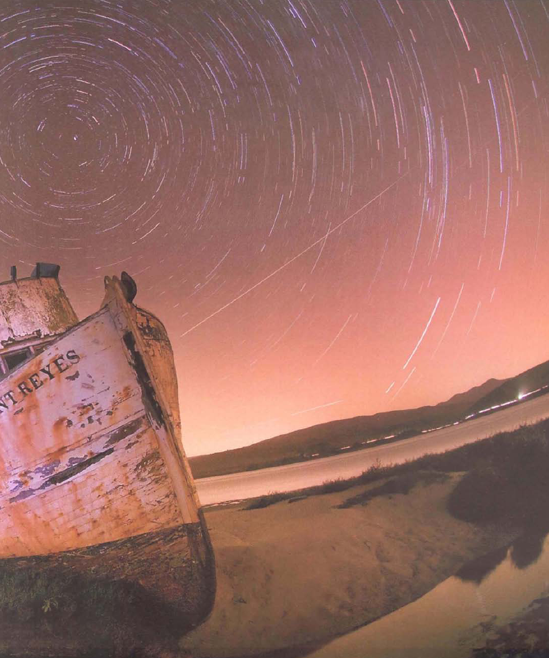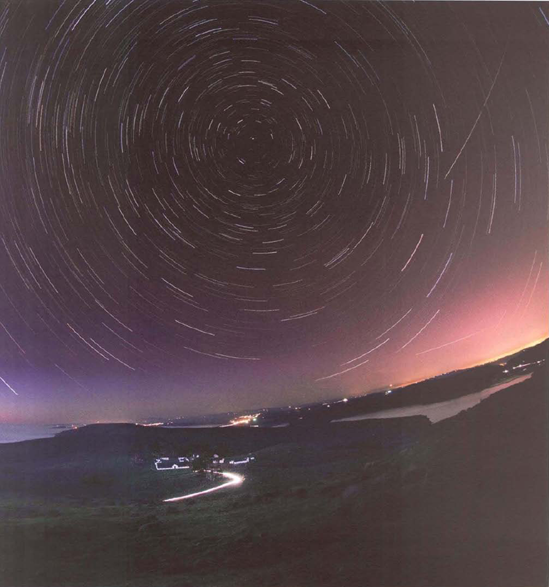Chapter 5. Stacking Star Trails
Understanding Stacking

Stacking was developed as a technique to use in digital astrophotography—photography through a powerful telescope—to reduce noise. The technique works just as well for terrestrial night photography that includes the earth as well as the sky.
By segmenting a single very long exposure into many shorter exposures and then recombining the shorter exposures in post-processing, most of the noise in each individual image gets canceled out. While this technique is conceptually simple, it takes planning and practice to execute successfully. And it requires work at the shooting stage as well as when post-processing the image stack.
Once you know the routines, the work that I refer to is not actually your work! An old advertisement suggested, "Let your fingers do the walking" to look up businesses in the Yellow Page phone directories. Similarly.

Figure 5.1. On a relatively balmy November evening shortly after sunset, I drove out to the end of the North Fork of the Point Reyes, California, peninsula. I pointed my camera due north for maximum star circles and lined up the historic Pierce Farm with Polaris. My plan was to stack at least twelve exposures as a composite and to use the lightest version for the fore ground. My first exposure was, in ...
Get Creative Night: Digital Photography Tips & Techniques now with the O’Reilly learning platform.
O’Reilly members experience books, live events, courses curated by job role, and more from O’Reilly and nearly 200 top publishers.

